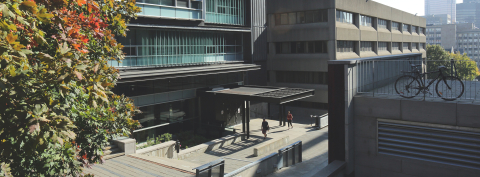
Departments, Schools & Institutes
Departments
- Bioengineering
- Chemical Engineering
- Civil Engineering
- Electrical & Computer Engineering
- Mechanical Engineering
- Mining & Materials Engineering
CONTACTS FOR ALL DEPARTMENTS CAN BE FOUND HERE:![]() Department Contacts, upd. Feb 2024
Department Contacts, upd. Feb 2024
Institutes & Centres
- MIAE (McGill Institute for Aerospace Engineering)
- MIAM (McGill Institute for Advance Materials)
- TISED (Trottier Institute for Sustainability in Engineering and Design)
- Brace Centre for Water Resources Management
- CIM (Centre for Intelligent Machines)
- McISCE (McGill Centre for Innovation in Storage and Conversion of Energy)
- McGill Metals Processing Centre
- STARaCom (Centre for Systems, Technologies and Applications for Radiofrequency and Communication)
Department of Bioengineering

Bioengineering uses analytical methods to quantitatively describe biology, but also draws upon the sophistication of living systems as a tool to design and create. This very rapidly growing research area covers a broad range of topics, such as materials science, biomedical applications, biophysics, molecular biology, and environmental engineering.
Department of Chemical Engineering

Chemical engineers design processes and systems that produce everything from plastics and paper to pharmaceuticals, processed foods and advanced materials. They also apply their knowledge of scientific processes to such diverse fields as manufacturing and bioengineering.
Department of Civil Engineering

Civil engineers create the infrastructure of modern society and are responsible for everything from roadways to water management to the buildings we live and work in.
Department of Electrical and Computer Engineering

Almost every facet of our society, whether in industry, health care, or domestic life, is dependent on computers in some form or another, and computer engineers make it all possible. They design and develop the hardware and software systems that have made computers so central to contemporary life.
Department of Mechanical Engineering

Mechanical engineers are involved in the conception, design, implementation and operation of mechanical systems in many aspects of life, from bicycles and space shuttles to espresso machines.
Department of Mining and Materials Engineering

Materials engineers help in developing super-strong alloys for the aerospace industry, lighter materials to reduce the environmental consequences of the transport industry, miniaturized and higher performing materials for the electronics industry, as well as ceramic composites used in artificial hips and bone replacements.
The Peter Guo-hua Fu School of Architecture

Architects use art, science and technology to shape the way we interact in our buildings and in our cities by designing environments that are aesthetically pleasing, structurally sound, and responsive in every way to the needs of the people who use them.
School of Urban Planning

Urban planning can be described as a technical and political process concerned with the welfare of people, control of the use of land, design of the urban environment including transportation and communication networks, and protection and enhancement of the natural environment.